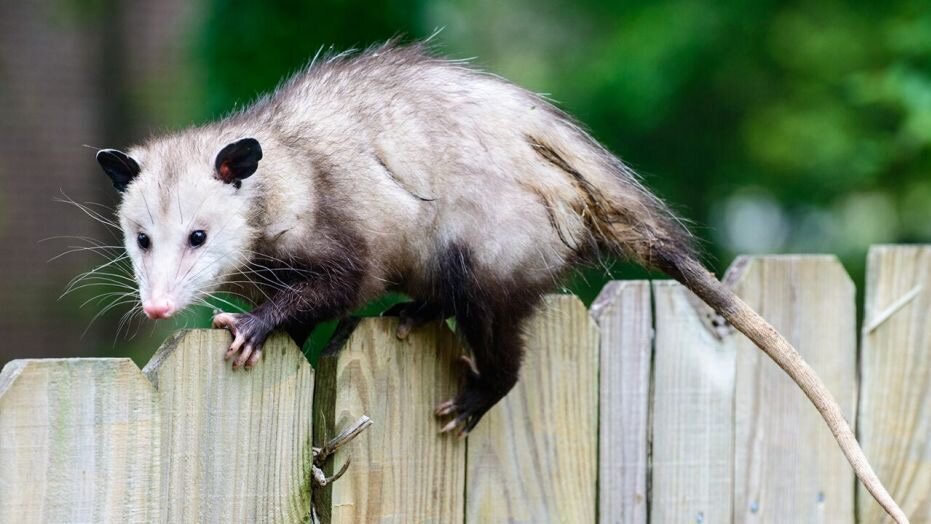Opossum (Didelphis virginiana)
Opossum Biology
An opossum is about the size of a house cat, has coarse grayish fur, a pointed face, and hairless, rounded ears. With its long hairless prehensile tail, the opossum can carry things such as nesting materials and even hang upside down from a tree branch. Opossums are about 2 to 3 feet long, including the tail, and weigh up to 15 pounds.
Opossum Behavior
In urban and suburban settings they may den under steps, porches, decks, garden tool sheds, and if accessible, in attics, garages, and beneath houses, where they make an untidy nest of sticks and whatever else may be available. In its foraging, the nocturnal opossum is a true omnivore, feeding on fruits, nuts, green plants, insects, snails, snakes, frogs, birds and their eggs, and small mammals such as meadow voles, mice, and rats. It eats both fresh meat and carrion and is often seen feeding on road kill.
Opossum Concerns
Opossums that live near people may visit vegetable gardens, compost piles, garbage cans, or food dishes intended for dogs or cats. Having lost much of their natural fear of people, they will even enter a home through a pet door in search of food. They get into fights with dogs and cats and can inflict serious injury with their mouthful of sharp pointed teeth. Opossums carry diseases such as leptospirosis, tuberculosis, relapsing fever, tularemia, spotted fever, toxoplasmosis, coccidiosis, trichomoniasis, and Chagas disease.
Opossum Control
As with skunks and raccoons, the best solution to an opossum’s presence beneath stairs, porches, decks, or buildings is to screen or block access to the area. Opossums are not wary of traps and can easily be caught with a box- or cage-type live-catch trap.




